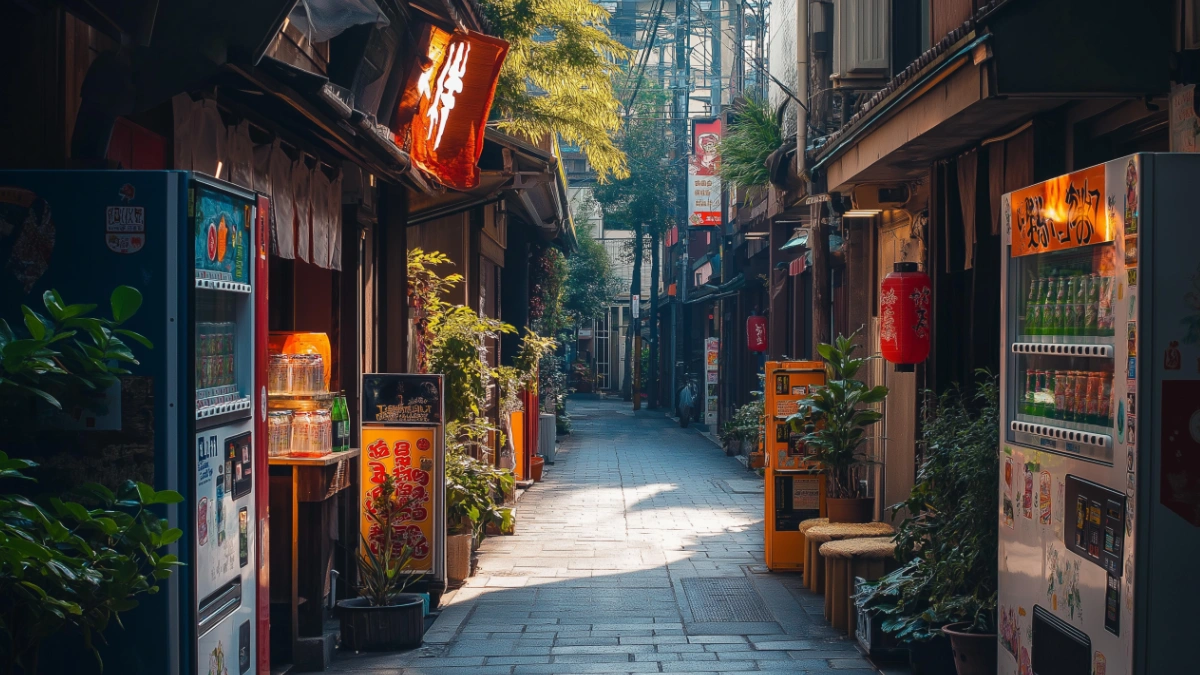Peaceful Morning on a Japan Street: A Glimpse into Everyday Life in the City
Table of Contents
There’s a kind of poetry found in the quiet corners of Japan’s bustling cities. While Tokyo’s skyline glitters at night and Kyoto’s temples draw tourists during the day, it’s in the early morning—on a quiet street tucked away from the noise—where Japan reveals its most authentic self. As the sun rises over narrow alleyways and tiled rooftops, the city wakes not with a roar, but with a soft hum of life: a shopkeeper sweeping his storefront, the aroma of fresh miso soup drifting from a family kitchen, and a delivery bike rolling past rows of vending machines.
For travelers who seek more than attractions and snapshots, exploring a Japan street during the early hours offers a rare connection to the country’s rhythm and soul. In this post, we’ll walk through the elements that make a peaceful Japanese morning so captivating. From traditional architecture to local customs and city sounds, this immersive guide reveals what it’s like to experience Japan as if you were a local—even if just for one serene morning.
The Early Morning Atmosphere: Sounds, Smells, and Stillness
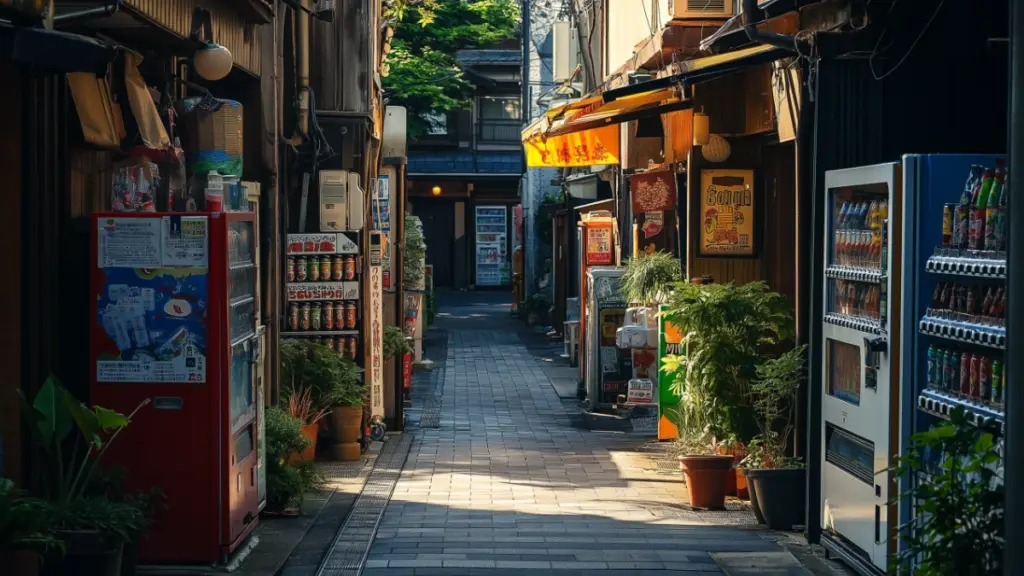
Japan’s city streets in the morning feel like a different world compared to their midday counterparts. As the sun begins to stretch across the skyline, there’s a meditative stillness that blankets the neighborhood. The hum of distant trains, the rhythmic clink of noren curtains being drawn back, and the soft whoosh of cyclists passing by—all contribute to a soundscape that’s both lively and soothing.
You might catch the scent of freshly steamed rice and soy sauce wafting from open kitchen windows, or the faint perfume of blooming camellia from neatly tended sidewalk planters. The streets, spotless even before the day begins, reflect the nation’s deep-rooted respect for cleanliness and harmony.
Sensory Breakdown Table: What You Might Encounter
| Sense | Typical Morning Experience |
|---|---|
| Sight | Soft light on tiled rooftops |
| Sound | Bicycle bells, distant train horns |
| Smell | Miso soup, rice, morning flowers |
| Touch | Cool morning air |
| Feeling | Calm, present, quietly inspired |
Traditional Architecture and Its Morning Glow
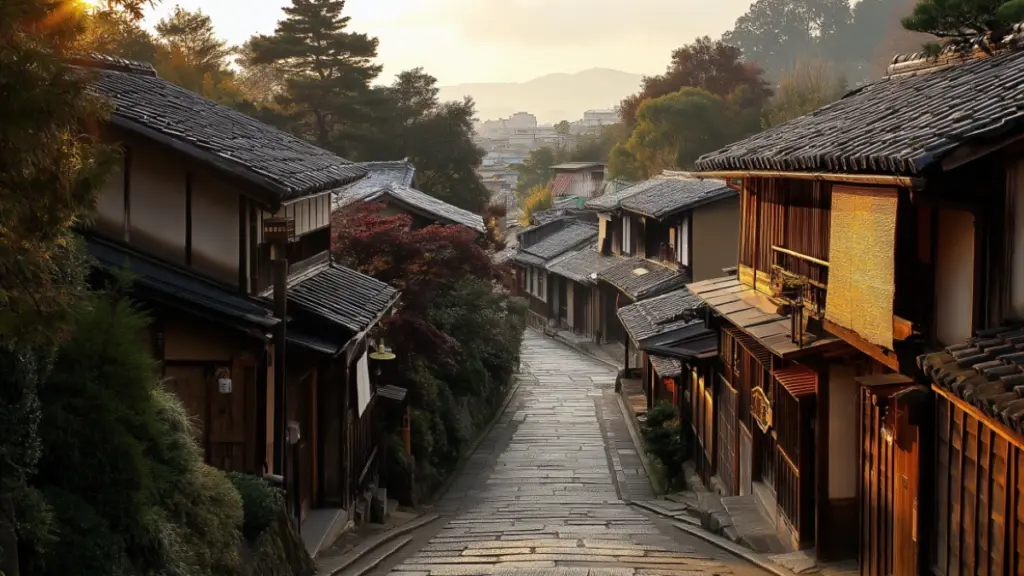
In the early light, Japanese architecture appears timeless. Wooden facades with shoji screens reflect a subtle glow. Small wooden homes sit side by side with sleek modern designs, each maintaining a respectful balance with its neighbors. It’s not uncommon to find streets where Edo-period houses still stand, their sliding doors slightly ajar as a sign of waking life.
The use of natural materials—wood, stone, paper—means these homes age gracefully, adding character instead of fading. Early mornings highlight this texture and depth, making every detail more noticeable: the worn step at the genkan (entrance), the grooves in a wooden post, or the patina on a copper rain chain.
Table: Key Elements of Japan Street Architecture
| Feature | Description |
|---|---|
| Genkan Entrance | Step-down entry for removing shoes |
| Shoji Screens | Paper sliding doors allowing filtered morning light |
| Rain Chains | Decorative alternative to gutters |
| Tiled Roofs | Often curved and glazed, catch early morning sunlight |
| Wooden Details | Fences, beams, and carvings show age and beauty |
Local Routines: A Slow Start to a Structured Day
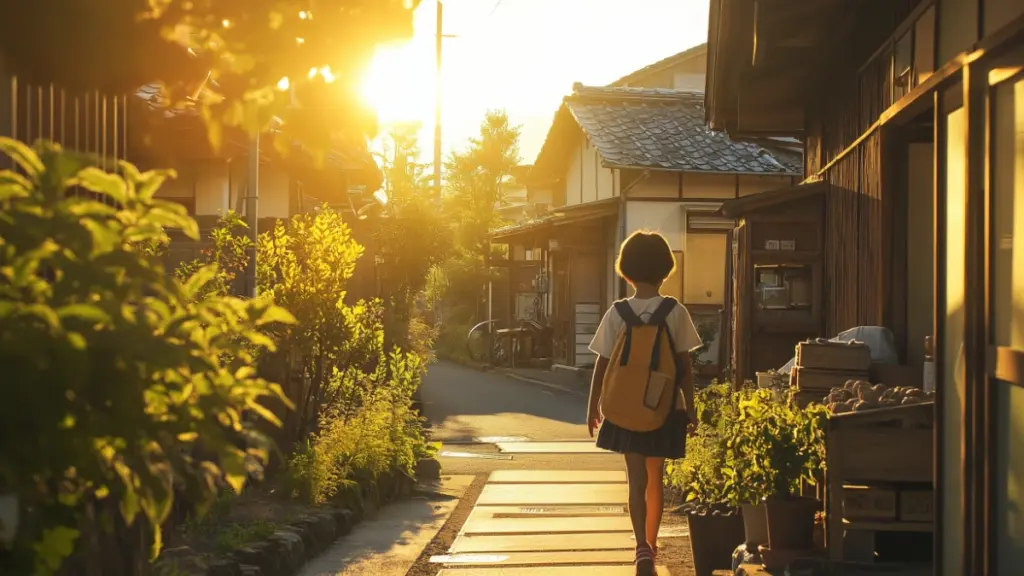
Unlike the rushed starts in many cities, mornings in Japan tend to be organized and purposeful. Locals might be seen stretching on their balconies, watering potted plants, or walking their dogs in silence. Elementary school students, wearing their neatly pressed uniforms and brightly colored backpacks, walk in orderly groups, guided by crossing guards at small intersections.
Elderly neighbors engage in morning tai chi or sweep their front stoops—a daily ritual of care that sets the tone for the day. Businesses begin opening one by one, with convenience stores and bakeries leading the charge. It’s in these moments of quiet labor that the city starts to breathe.
Table: Common Morning Activities in Japanese Neighborhoods
| Activity | Who You’ll See |
|---|---|
| Plant Watering | Elderly residents, homemakers |
| Tai Chi or Exercises | Seniors in parks or small squares |
| Dog Walking | Locals of all ages |
| School Commute | Children with yellow hats and randoseru backpacks |
| Shop Opening | Shopkeepers, florists, bakeries |
The Role of Vending Machines and Convenience Stores

No Japanese street is complete without the omnipresent vending machines—offering everything from hot green tea to canned corn soup. In the early morning, they become quick stops for commuters grabbing a warm drink or snack on the go. Lit with soft neon glow even in daylight, they add a touch of modernity to otherwise traditional streets.
Meanwhile, convenience stores like 7-Eleven, Lawson, or FamilyMart offer an impressive range of breakfast options: onigiri, egg sandwiches, and hot drinks. These spots often serve as a transitional space between home and the outside world—clean, quiet, and filled with purpose.
Table: Popular Japanese Morning Convenience Store Items
| Item | Description |
|---|---|
| Onigiri | Rice balls with seaweed and fillings |
| Nikuman | Steamed meat buns |
| Green Tea | Sold hot or cold in bottles |
| Egg Sandwich | Fluffy tamago between soft white bread |
| Miso Soup Packets | Instant but flavorful breakfast option |
Urban Nature: Gardens, Shrines, and Hidden Greenspaces
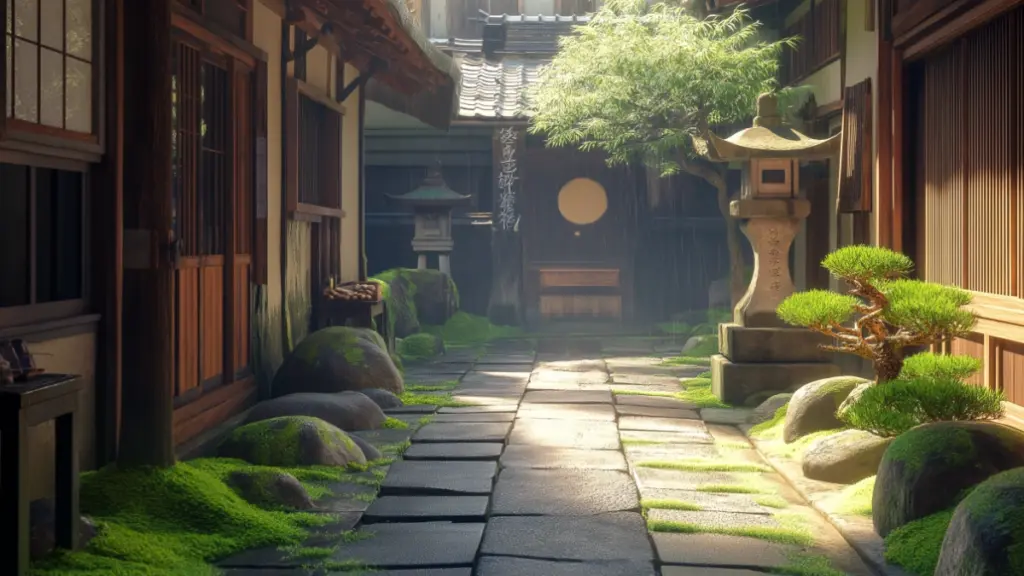
Despite the dense urban environment, Japanese neighborhoods make space for nature. Pocket gardens, moss-covered stones, potted bonsai trees, and even a small corner shrine make morning walks a spiritual and visual delight. You’ll often find greenery neatly organized in front of homes, contributing to a sense of balance and peace.
Shrines tucked into alleyways offer a moment of reflection, and it’s common to see locals stopping to bow or ring a bell before starting their day. These micro-oases of serenity remind visitors that Japanese urban planning respects nature not as decoration, but as necessity.
Table: Common Green Spaces in Japanese Streets
| Type | What to Expect |
|---|---|
| Pocket Garden | Small front-yard arrangements with stones |
| Roadside Planters | Potted flowers and bonsai by the sidewalk |
| Alleyway Shrines | Mini Shinto shrines with red torii gates |
| Park Benches | Found near schools or public buildings |
| Rooftop Gardens | In newer apartment buildings |
Morning Markets and Fresh Food Culture
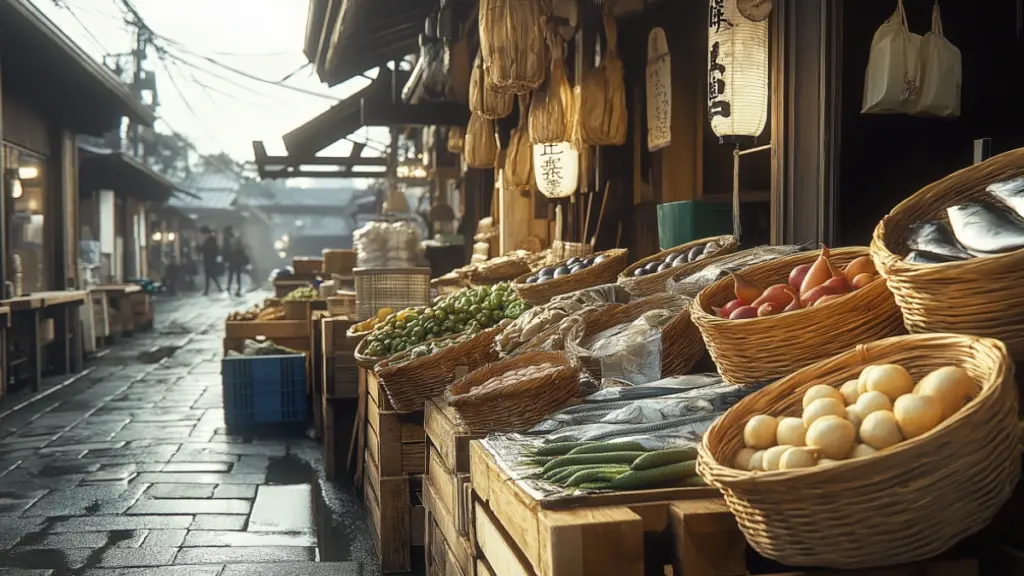
Though less common in ultra-modern districts, local morning markets still thrive in many parts of Japan, especially near train stations and older neighborhoods. Vendors set up their stalls early, offering fresh fish, pickled vegetables, seasonal fruits, and handmade tofu. These markets represent not only a means of daily shopping but also a way to connect with the community.
Shopping here is more personal. Vendors greet repeat customers by name and offer samples. Seasonal items rotate often—like persimmons in autumn or bamboo shoots in spring—keeping the offerings fresh and relevant. Even travelers can find joy in browsing these stalls, picking up a simple breakfast and savoring it on a nearby bench while watching life go by.
Table: Typical Items at a Japanese Morning Market
| Product | Seasonal or Common Use |
|---|---|
| Fresh Fish | For miso soup or grilled breakfast dishes |
| Pickled Vegetables | Traditional side dishes |
| Tofu | Handmade, often from local soybeans |
| Fruit (persimmons, citrus) | Seasonal morning treats |
| Rice Crackers | Light snack, often homemade |
How to Experience a Peaceful Japan Street as a Visitor
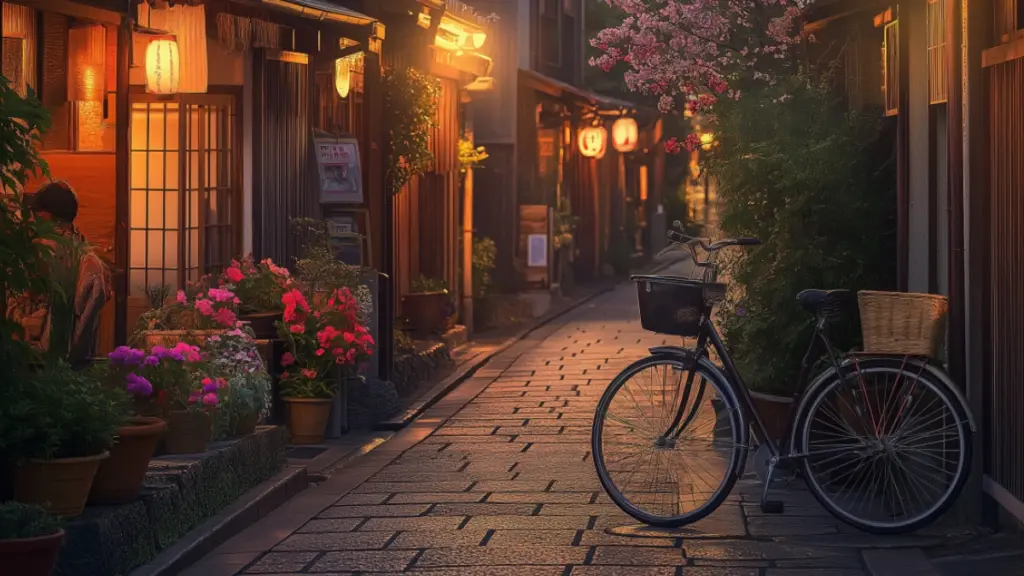
For travelers who want to feel the soul of a place, wandering a Japan street early in the morning is one of the most authentic experiences you can have. Begin your walk just after sunrise—ideally between 6 and 7 AM—when the streets are still quiet but gently coming to life.
Find a neighborhood away from tourist hotspots. In Tokyo, areas like Yanaka or Shimokitazawa offer a perfect blend of tradition and bohemian charm. In Kyoto, explore the quieter residential lanes of Higashiyama or Arashiyama. Bring a small notebook or camera and simply observe. Pause at a vending machine for hot tea. Smile back at an elderly passerby. Watch how the street cleans itself—through both people and time.
This slow travel mindset invites you to become more than a visitor. It encourages respect, presence, and mindfulness—elements deeply tied to Japanese culture itself.
Checklist: Tips for a Serene Morning Street Experience
| Tip | Why It Matters |
|---|---|
| Wake up early | Catch the atmosphere before the rush |
| Visit non-touristy areas | More authentic daily life views |
| Observe without rushing | Allows you to absorb the quiet beauty |
| Engage with locals politely | Smile or bow in return |
| Bring light gear | Notebook, camera, reusable cup |
Conclusion
A peaceful morning on a Japan street reveals a side of the country that isn’t loud or grand—but profoundly beautiful. Through the sights of traditional architecture, the soft hum of routine, and the carefully tended greenspaces, travelers find not just inspiration, but connection. These slow moments offer a deeper understanding of Japanese life—one that prioritizes balance, beauty, and quiet purpose. Whether you’re planning a trip or simply dreaming from afar, may your mornings always hold a little of this calm.

